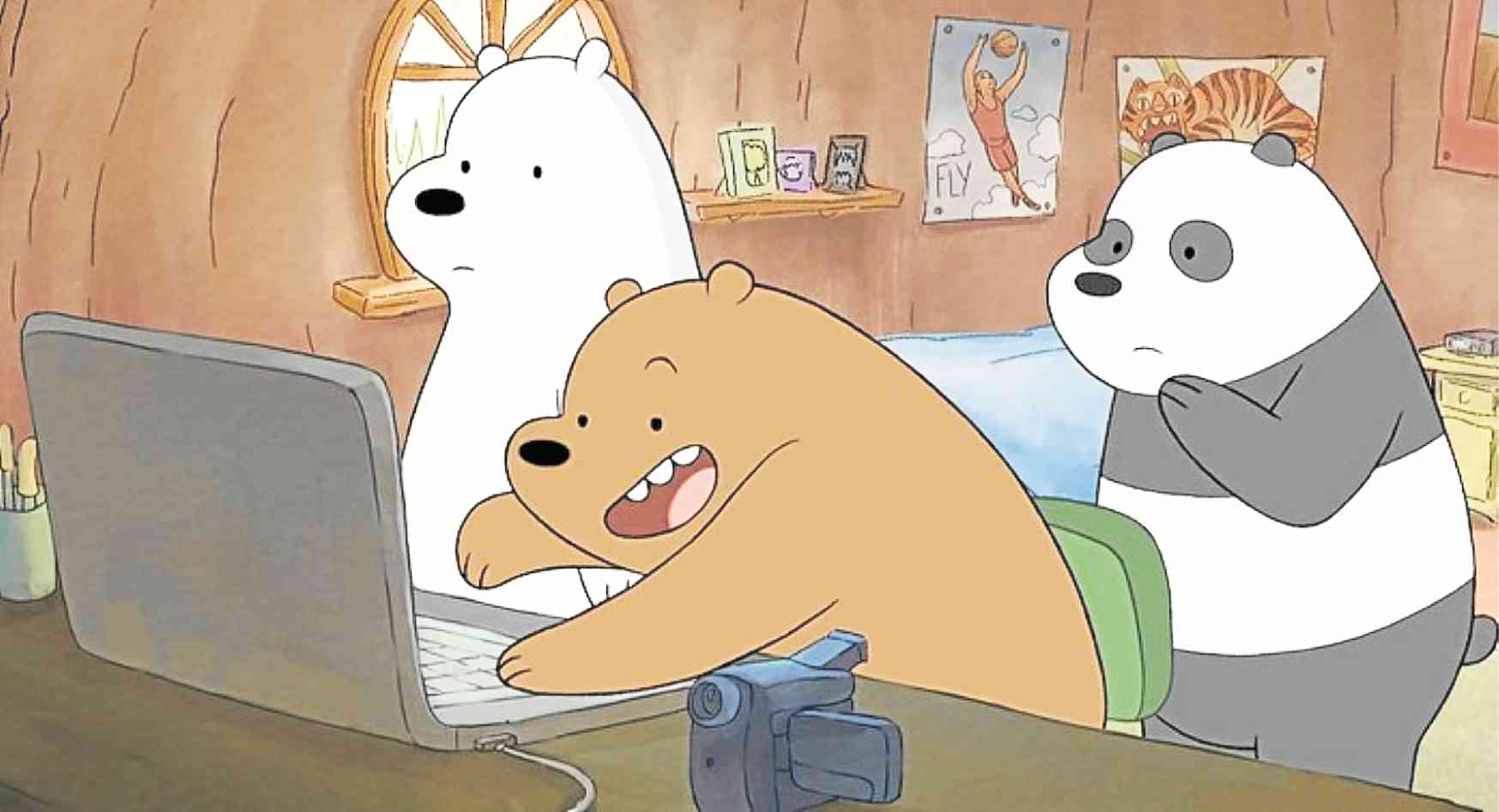The tech-savvy characters of the hit animated series, “We Bare Bears,” are very contemporary, connecting through social media like humans, and availing of imagined services that may become reality one day.
For instance, in one episode, a courier service delivers packages using drones.
The show is “an allegory for what it feels like to be a minority in America,” the Asian-American creator of the show, Daniel Chong, posted on Twitter last year, describing the cuddly characters’ (Grizz, Panda and Ice Bear) desire to fit in.
It’s a series that both kids and adults can relate to as it is the product of diverse influences: “Our show is … ‘Seinfeld’ meets Wes Anderson meets ‘Peanuts’ meets ‘Portlandia’ meets ‘Broad City,’” Chong told the Inquirer in an e-mail interview.
Airing locally on Cartoon Network (weekdays, 8:45 a.m., 4:45 p.m.), “We Bare Bears” is based on the 2010 webcomic, “The Three Bare Bears,” and is currently on its third season. Its ursine protagonists are voiced by actors Eric Edelstein (Grizz), Bobby Moynihan (Panda) and Demetri Martin (Ice Bear).
The Los Angeles-based Chong, 38, is the son of Singaporean parents who moved to the United States. He has had extensive experience in the field of animation, as recalled in excerpts from the interview:
How would you sum up working for major animation studios before all this? One of the most influential things I learned at Disney was with [animator-illustrator] Chris Sanders on a movie called “American Dog.”
He had a certain sensibility, a way of running his crew that really inspired me. It became “Bolt,” which I worked on.
After that, I jumped around a little bit. I was at Blue Sky and Nickelodeon. Then, I was at Pixar for four years. I worked on a couple of projects, including “Inside Out.”
Our visual style [in “We Bare Bears”] is simple and a bit of a throwback, but we focus on strong characters and storytelling—a sensibility instilled in me at my time with Pixar.
What details from your webcomic eventually made it to the show? The “Bear Stack” was central to the comic, so that definitely carried into the show. And even though I hadn’t defined their personalities that much, there are glimpses of Grizz as leader, Panda as fragile, and Ice Bear as an oddball in the comics.
How would you describe the modern vibe, and fan response to their online activities? I knew it would be risky to include all that in an animated show—it can easily come off [as] tacky or gimmicky.
Also, not many animated shows are willing to date themselves so quickly by including as much pop culture and modern tech as our show does.
But, overall, audiences seem to have embraced it, and it adds texture to the show in a unique and unexpected way.
How has the show evolved from its first to latest season? We’ve tried to focus better and simplify our stories. We’ve also learned to pace ourselves better. But, we’ve also found places to evolve and make certain characters fuller.
Ice Bear has stretched, character-wise, quite a bit in relation to how seemingly simple he appears. For a villainous character like Nom Nom, we’ve started guiding him toward some redemptive qualities, which has been fun to explore.
What advice do you give aspiring animators or show creators? Learning every aspect of the process can be very useful. Going to film school and making my own animated films taught me how to execute a complete idea and touch every aspect of production. And with technology being so accessible now, you don’t need to go to school to [make] your own films.
I also got to intern at an animation studio and [worked on] the last season of the original iteration of “The Powerpuff Girls”—and that provided invaluable experience in seeing how an animated show ran.


